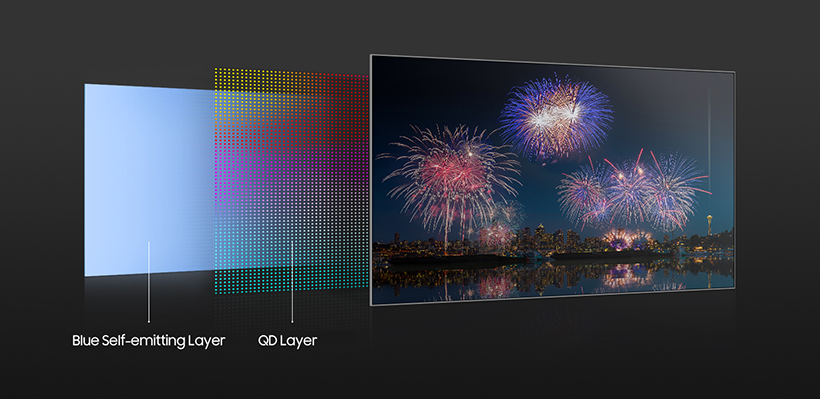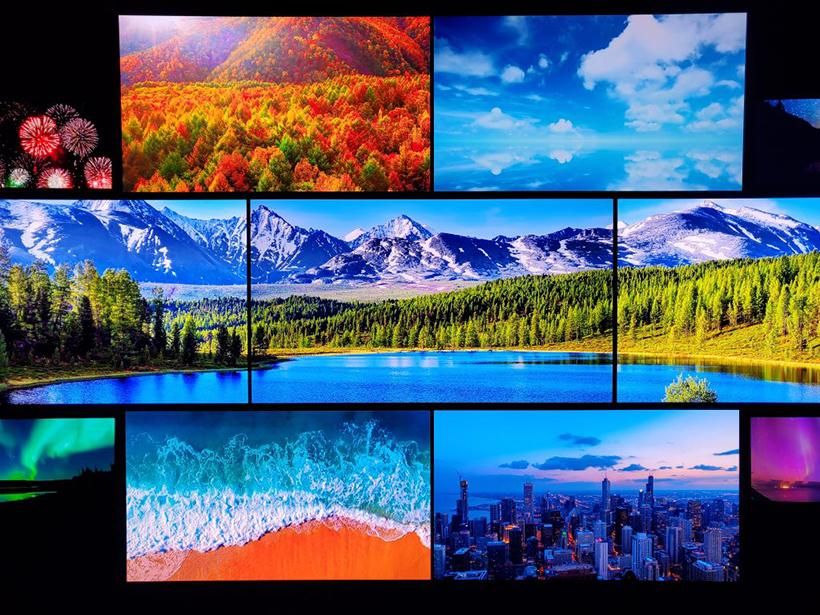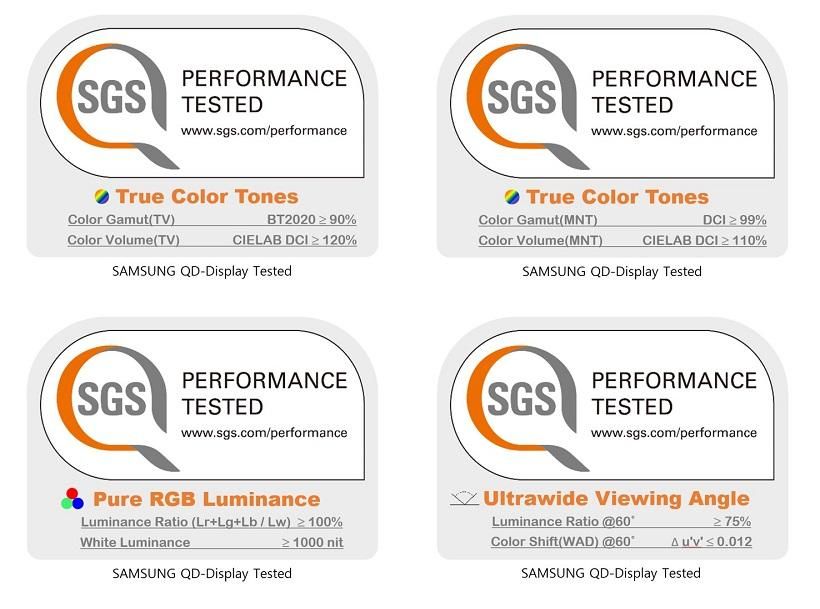Samsung has continually been at the forefront of display technology, and you might have often heard of its panels used across multiple product categories, primarily its televisions and the vast number of mobile phones. Well, earlier today, Samsung Display announced that its QD (Quantum Dot)-Display received certifications from SGS across three criteria, which promises that these displays feature improved color accuracy, RGB representation, and wider viewing angles.
The three certifications received are:
- True Colors Tones
- Pure RGB Luminance
- Ultrawide Viewing Angle
“As the video content industry, production technologies, platforms, and communication infrastructures are rapidly growing, the demand for premium quality content is also quickly increasing,” says Ho Sun, the head of Strategic Marketing for Samsung Display’s Large Display Division
“QD-Display is the answer to meeting this demand and offers consumers a new standard for viewing high-quality content at the highest picture quality.”
Source: Samsung Display
The True Color Tones Certification is being given to the display based on testing done with the BT.2020 (also known as rec.2020) and the DCI-P3 colors spaces. For the former, the QD panel could achieve 90 percent coverage, a number greater than those in existing products, and for the latter, it reached 120 percent of the criteria's defined color volume.
Samsung Display mentioned that the color gamut of the existing TV display rarely ever exceeds 70 percent of the BT.2020 standard, and color volume tends to fall under 100 percent.
Next, the Pure RGB Luminance Certification was given to QD Display, highlighting its ability to express Red, Green, and Blue colors without additional compensating luminance. The certification is provided when the total sum of luminance for each RGB prime color is the same or higher than the luminance value of white created by the combination.
The QD-Display’s luminance of white is a claimed 1,000 nits and the combined figures that resulted from SGS's testing were estimated to be equivalent.
Generally, displays add white pixels to increase luminance, and this leads to the RGB pixels having a lower brightness in comparison, which finally results in darker colors on the screen -- a strict no for accuracy.
And lastly, for the Ultrawide Viewing Angle Certification, the display's picture quality was analyzed by multiple viewers from various positions. Samsung's internal evaluation showed that a 65-inch TV, WOLED, and LCD, when viewed from a 60-degree angle, showed a drop of frontal luminance to 53 percent and 35 percent, respectively. On the other hand, the QD Display only showed a 20 percent drop, maintaining 80% frontal luminance.
These improvements will continue to make their way to consumer products as Samsung Display continues to mass-produce the QD-Display. It also added that it is working with several customers to bring this technology to products launching in 2022.
Source: Samsung Display



